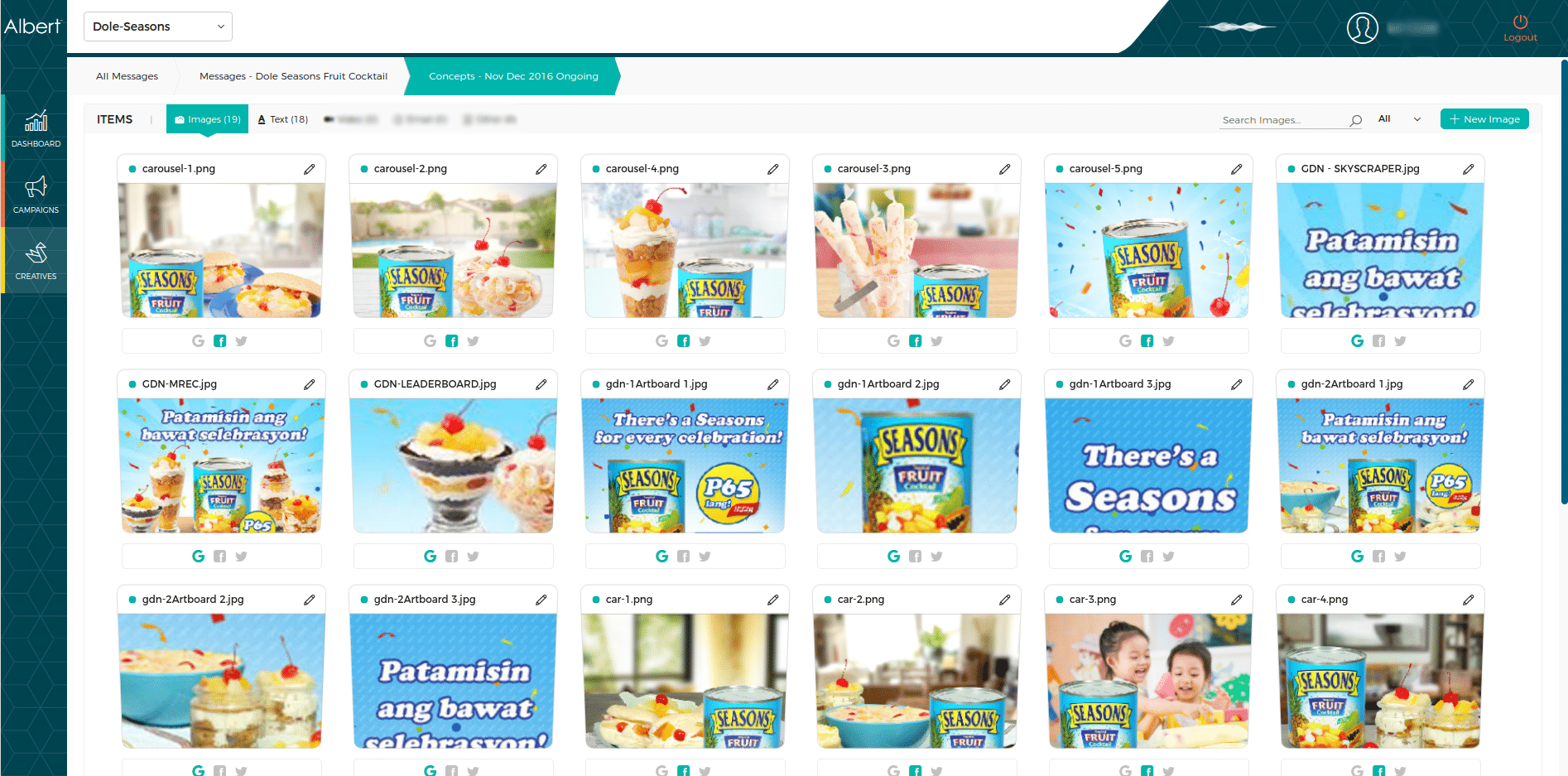Tech Provider: Albert
Client Company: Dole Food Company
Client Company Description: Dole is an American agricultural multinational corporation. The company is the largest producer of fruit and vegetables in the world, operating with 74,300 full-time and seasonal employees who are responsible for over 300 products in 90 countries (according to Wikipedia).
Industry: Produce
Function: Marketing and Advertising
Problem
Dole’s goals were to increase brand awareness for its “Seasons” fruit cocktail brand, increase sales of its smaller 2 – 3 servings cans, and gain market share in a product category with a strong competitor. The “Seasons” product was underrepresented in sales in comparison to Dole’s other products of a similar size, and Dole aimed to improve sales of this particular product.
This campaign took place entirely in the Philippines.
Approach
To achieve these things, Dole Asia built out a campaign around the fact that fruit cocktails serve as a staple at small celebrations, with an emphasis on small celebratory moments (such as intimate family Christmas gatherings). Dole’s “Seasons” campaign with Albert encompassed social, search, display, and email channels.
Equipped with campaign creative, Albert then got to work, autonomously deploying Dole’s campaign across social, display and search channels, with a focus on hyperlocal audience identification and targeting in the Philippines.
Albert was working with image and headline options (all provided by Dole) — which Albert mixes and matches based on on-the-fly testing for multiple micro-audience-segments, channels, and “several other factors.” Albert claims that Dole provided the creative images, headlines and parameters for the campaign (e.g., desired digital channels, audience demographics, geography, budget, etc.), and Albery executed on the targeting and rotation of adverts.
Examples of Albert’s variants of Dole’s ad creatives below:


Results
The campaign’s results were so dramatic that suppliers initially ran out of their Dole product supply and after the first four weeks, the brand had to introduce new KPIs to account for how quickly Albert outperformed its existing ones.
Once stores were able to restock, in-store business for the “Seasons” product grew 87% over the 2-month period. Dole claims that this 87% increase was based on data from one of their major grocery customers in the Philippines, stating that the company is unable to pull such before-and-after sales data from all of its Philippines customer stores. Dole claims that this large customer is representative of the overall sales improvement seen in the region.
Additionally, this 8-week digital campaign resulted in a reach close to 6 million, the Dole Philippines Facebook page receiving 60,000 new page likes, and an engagement rate 12x above the social media norm in the Philippines (Dole themselves claim that it obtained social media engagement norms from a 3rd-party campaign analysis team, though this analysis wasn’t provided to Emerj).
When asked about comparative acquisition costs with Albert’s campaign, a Dole representative stated:
“This was the first time we did anything of significant scale in the digital sphere in the Philippines. So one is unable to compare a “without-Albert” scenario to a “with-Albert” scenario. What we can say is that we did a separate ROI study which showed the Albert activity delivered an ROI 1.6x better than in-store activity.”
Transferable Lessons
Testing online advertisements starts with strong creatives and a good understanding of the customer (mostly tasks in the realm of human expertise), but inevitably involves tremendous amounts of iteration and testing (a task that machines may be much better suited for).
It has been speculated on a recent Emerj interview that the future of programmatic advertising (such as Facebook or Google AdWords) will inevitably involve an AI-based battle on programmatic platforms, where competing algorithms vie to get the cheapest clicks and the highest conversions based on an ever-increasing number of targeting factors (geo region, age, gender, purchase behavior, etc).
Just as in the world of Wall Street, advanced trading algorithms will control not only for optimizing their own result, but also on confusing and misleading opposing algorithms in real time. The massive growth and profitability of Google and Facebook would suggest that it is not unrealistic to suppose that the world of online advertising may be nearly as competitive as the stock market.
While this kind of advanced algorithmic activity is far from necessary for most companies who are advertising online, it’s like that it will increasingly become the norm as AI tools become accessible not just to online giants, but to small and medium-sized businesses as well.


















